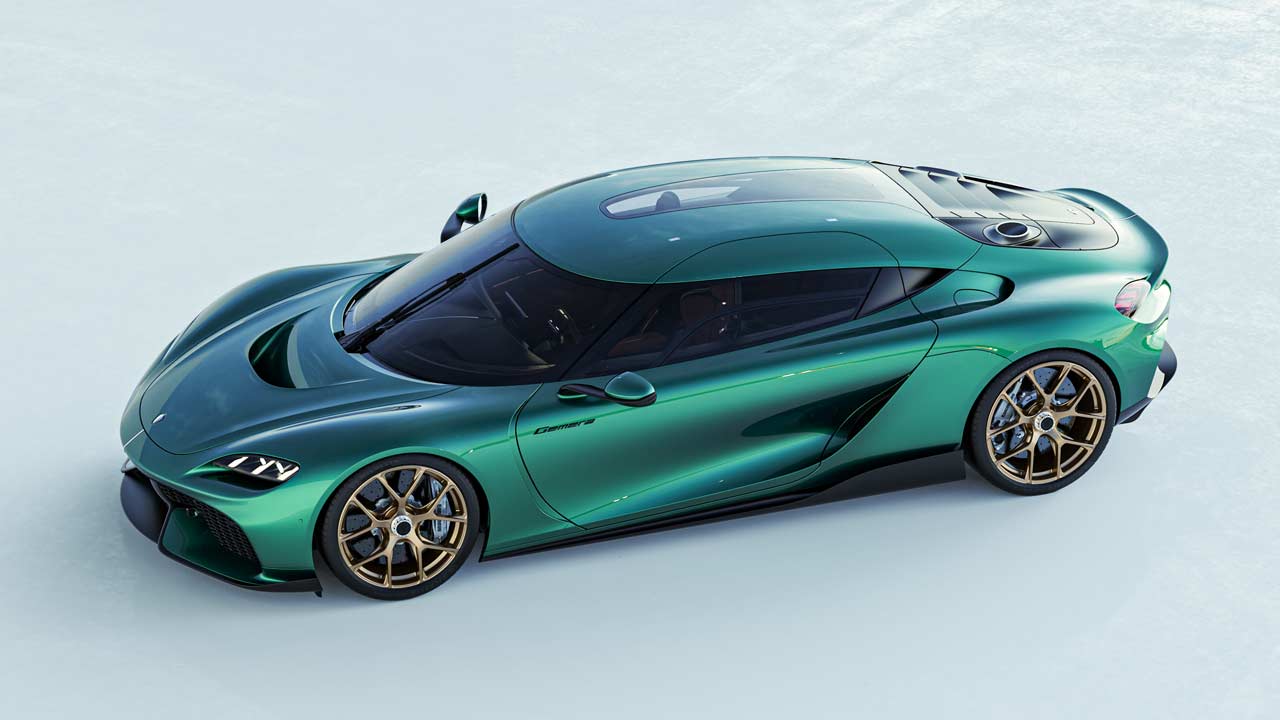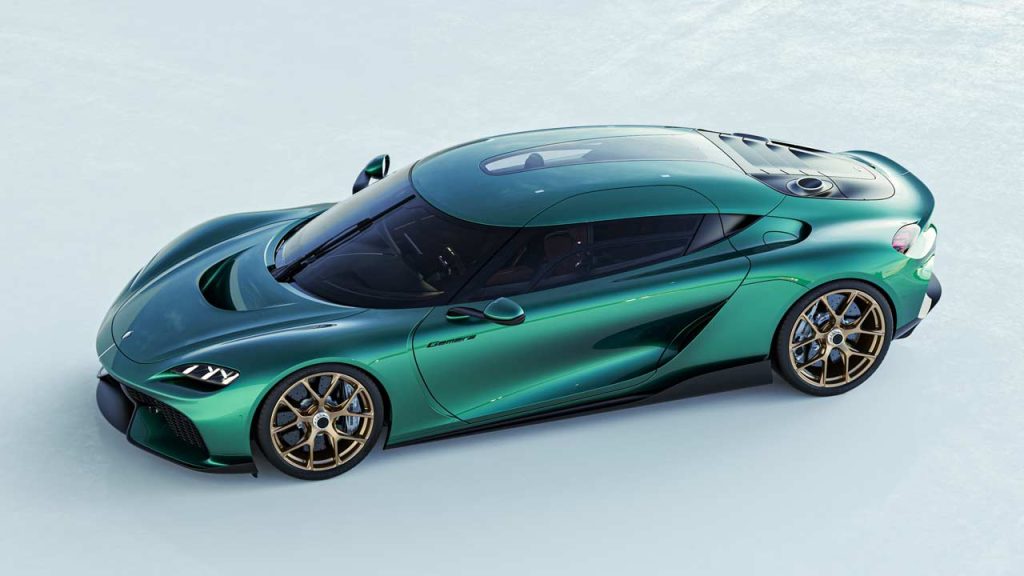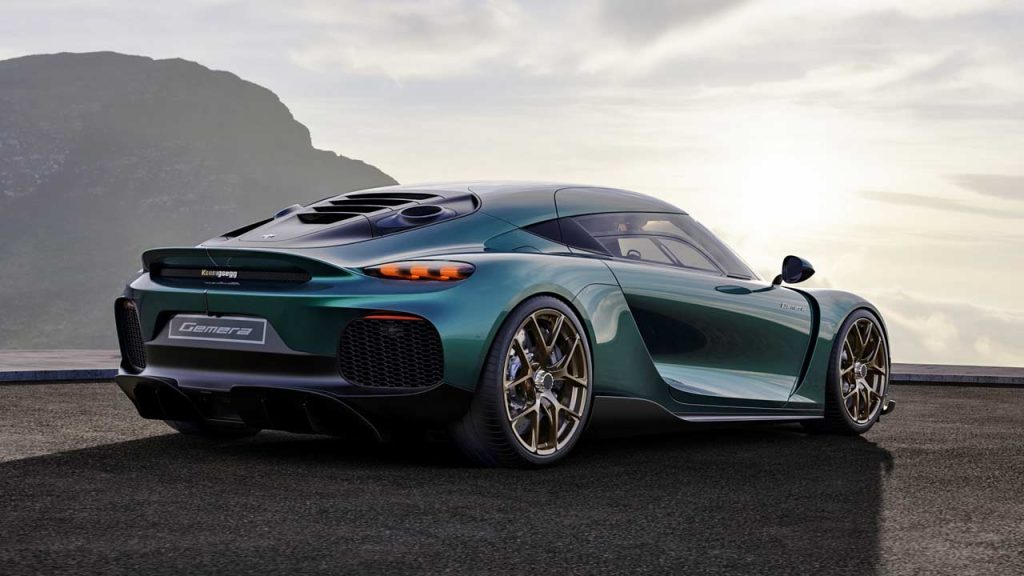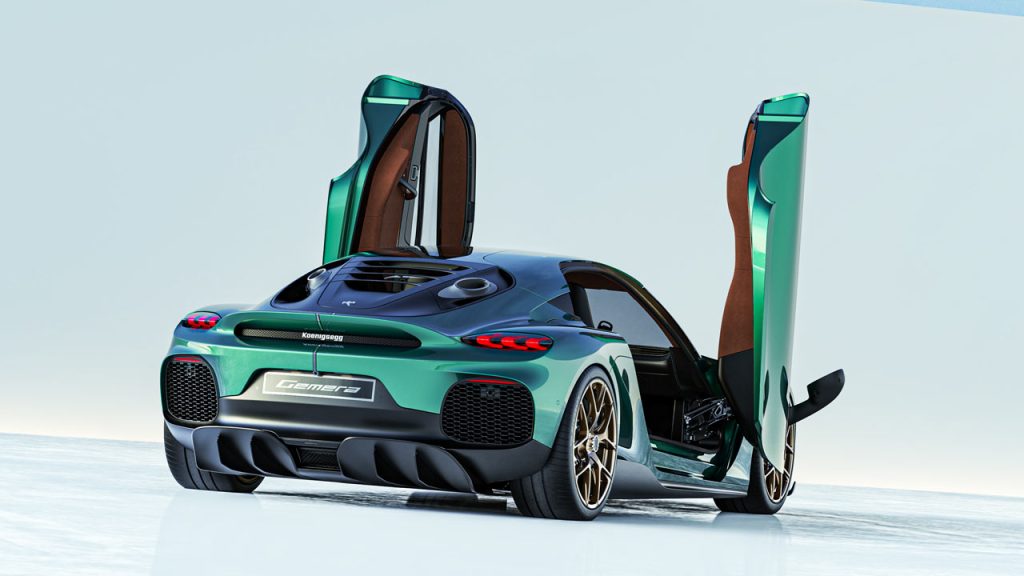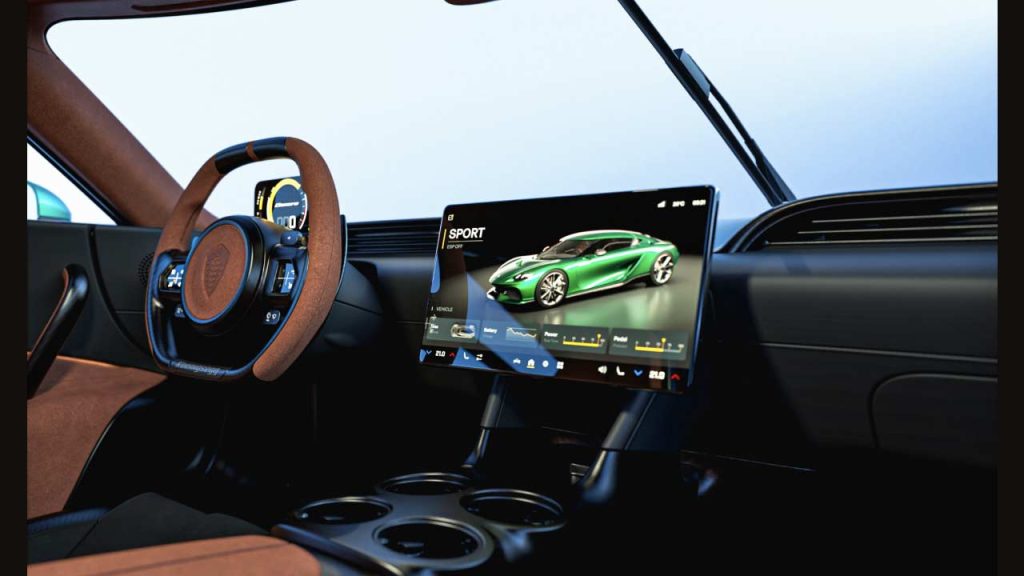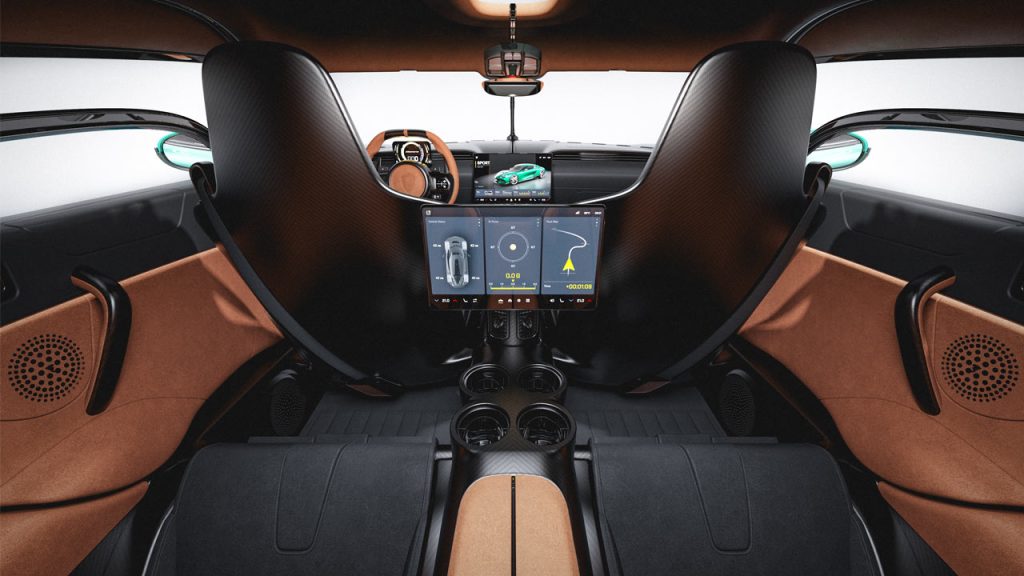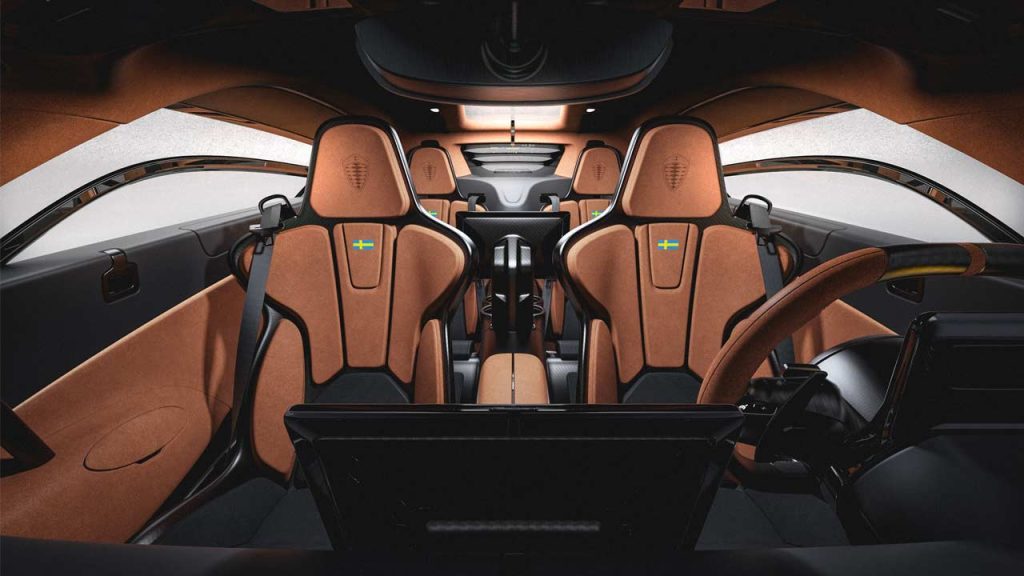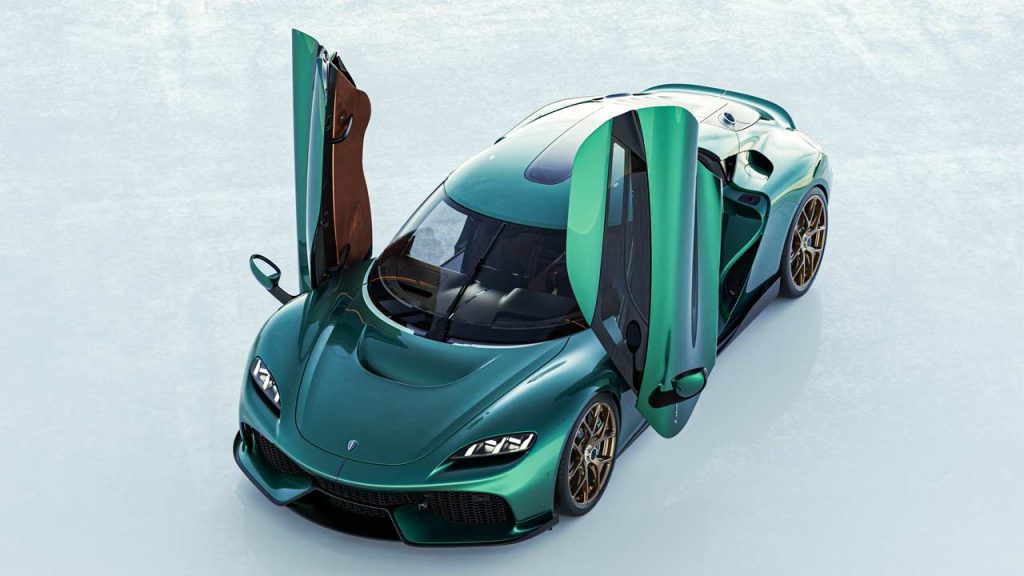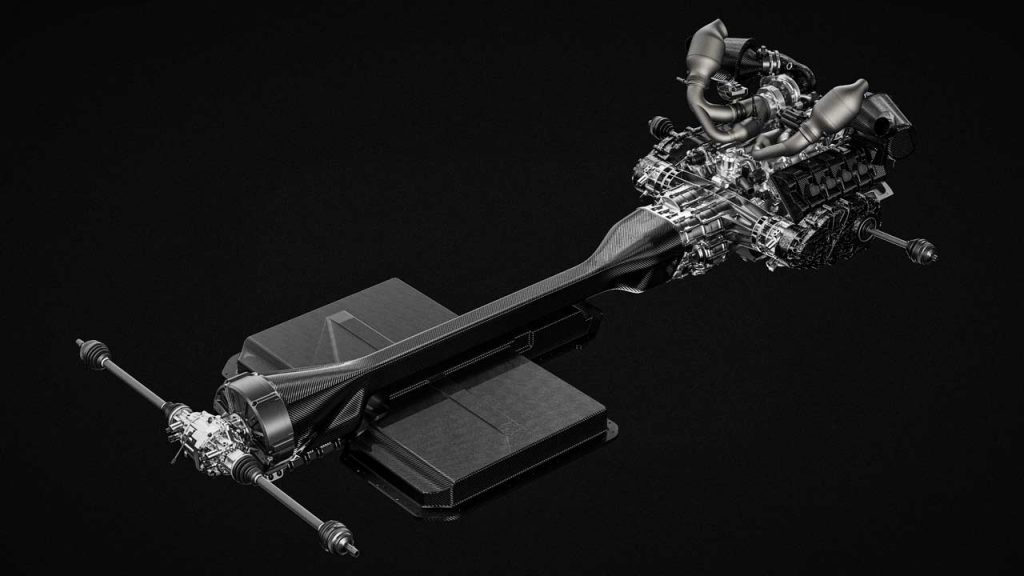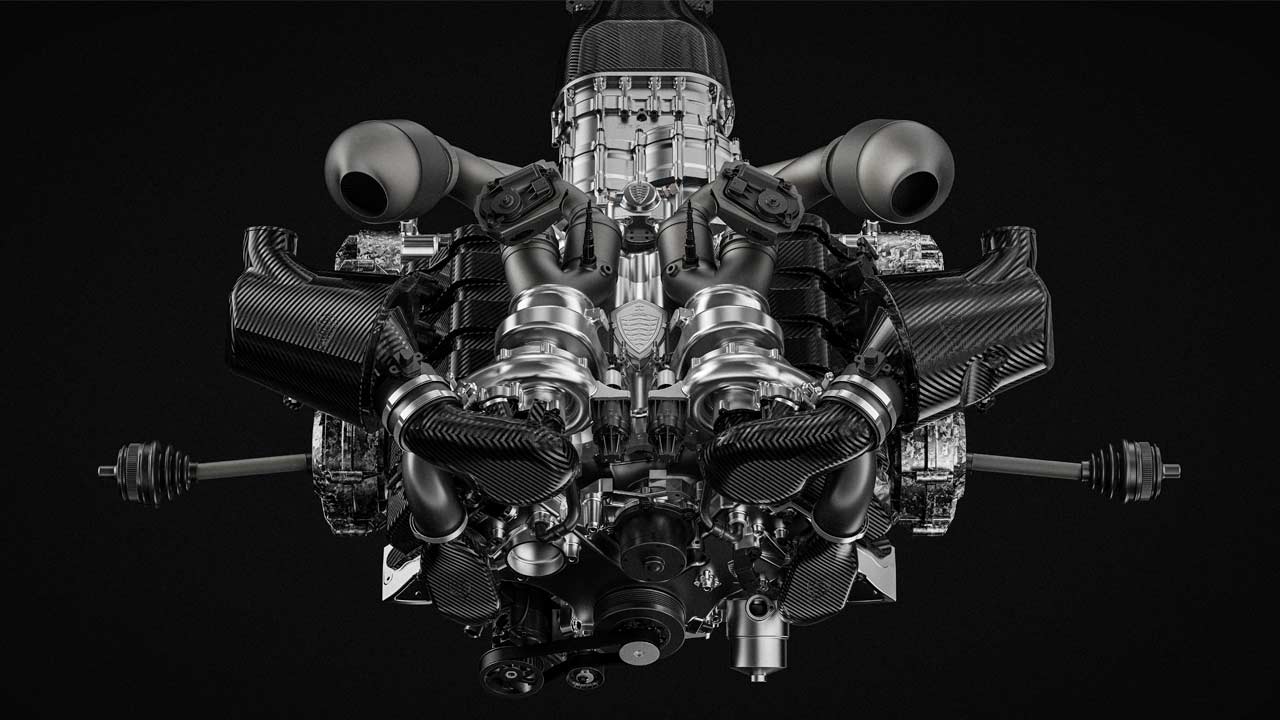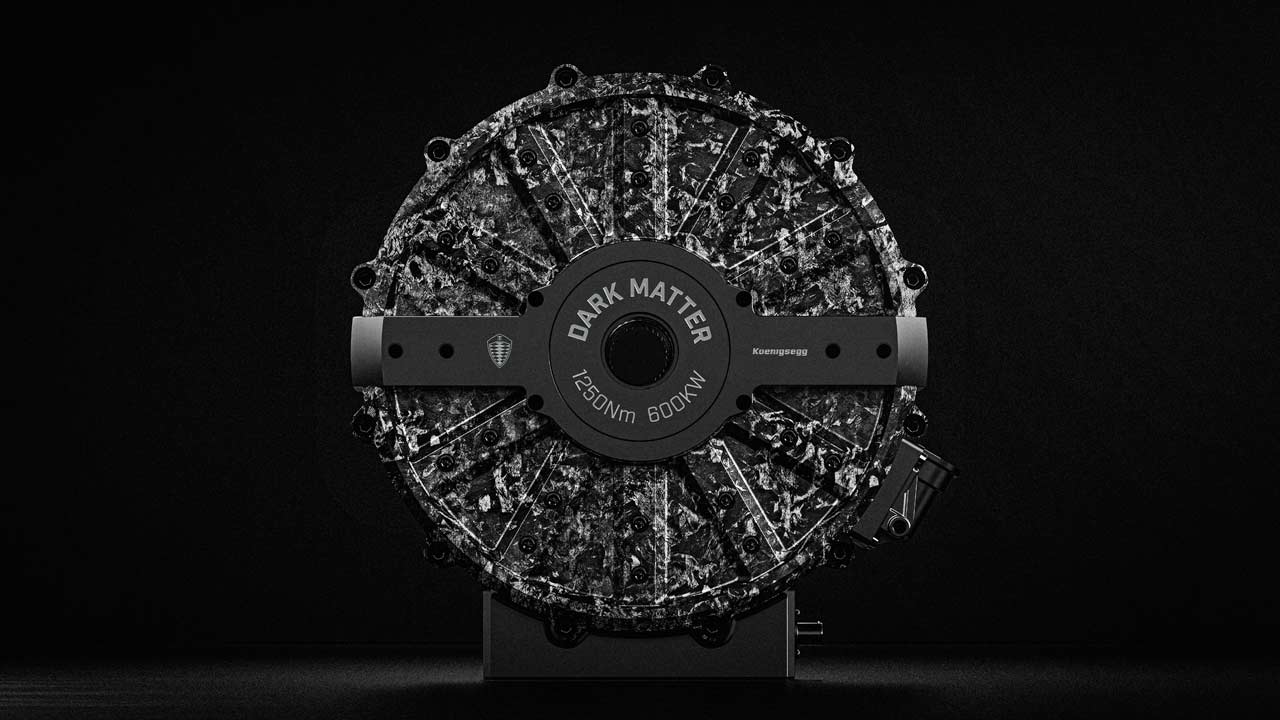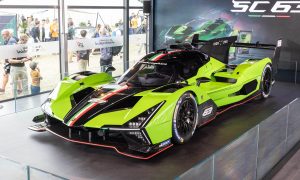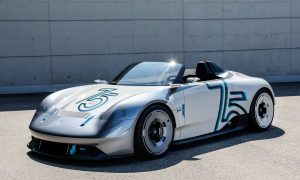The Koenigsegg Gemera, the family hypercar which made its debut during the peak of the pandemic, has now evolved into a production version. In an official statement, Koenigsegg said that production will commence at the company’s Gripen Atelier by the end of 2024, with deliveries scheduled to commence in the first half of 2025.
The exterior design has some noticeable differences compared with the original car such as the internal detailing of headlights and taillights; the C-shaped outlet on the bonnet; the wheel design; intake scoops behind the doors; louvered rear window; larger exhaust outlets; a bit less aggressive rear diffuser, and of course, a more “normal” wing mirrors.
On the inside, you have carbon fibre-shelled seats, a squarish steering wheel, and all the displays you saw originally. However, since there are traditional door mirrors, the displays at the outer edges of the dashboard are no longer needed. Other than that, the production Gemera has all the creature comforts and technology to pamper four fully grown adults.
Moving on to the juicy bits of the story, the Gemera as you might remember, was conceived as a plug-in hybrid hypercar, powered by a 2.0L 3-cylinder twin-turbo “Tiny Friendly Giant” flex-fuel engine, combined with two electric motors on the rear axle. The original plan was also to include another electric motor on the crankshaft with HydraCoup, a mechanism similar to Regera‘s Direct Drive Transmission (KDD).
This time, however, there are some differences. The TFG is paired with a 9-speed multi-clutch Light Speed Tourbillion Transmission (LSTT). It’s the same transmission you’ll find in the Jesko, but ‘Tourbillion’ was included in the name because according to Christian, the mechanism represents the automotive equivalent of a high-end Swiss watch. And, there are no rear electric motors. Meaning, instead of 3 electric motors, this time there’s gonna be only one.
And, the electric motor used now is an in-house developed new one called ‘Dark Matter’ as opposed to using ‘Quarks‘ as per the original plan. The patent-pending Raxial Flux motor weighs only 39 kg (86 lbs). Each unit is capable of offering up to 600 kW (816 metric hp/805 bhp) and 1,250 Nm (922 lb-ft). However, the combined figures from motors and TFG are capped at 1,044 kW (1,419 metric hp/1,400 bhp) and 1,850 Nm (1,364 lb-ft). The motor is paired with the LSTT. Four-wheel-drive system and four-wheel torque vectoring are also present. The battery pack is gonna be an 850-volt 14 kWh one.
For those who want more, Koenigsegg will swap the TFG for a 5.0L twin-turbo V8 (from Jesko), offering combined figures of 1,715 kW (2,332 metric hp/2,300 bhp) and 2,750 Nm (2,028 lb-ft). I mean, come on, dude! Are you gonna drive to Mars with those kinda numbers?

Leave a Reply
Note: Comments that are unrelated to the post above get automatically filtered into the trash bin.
